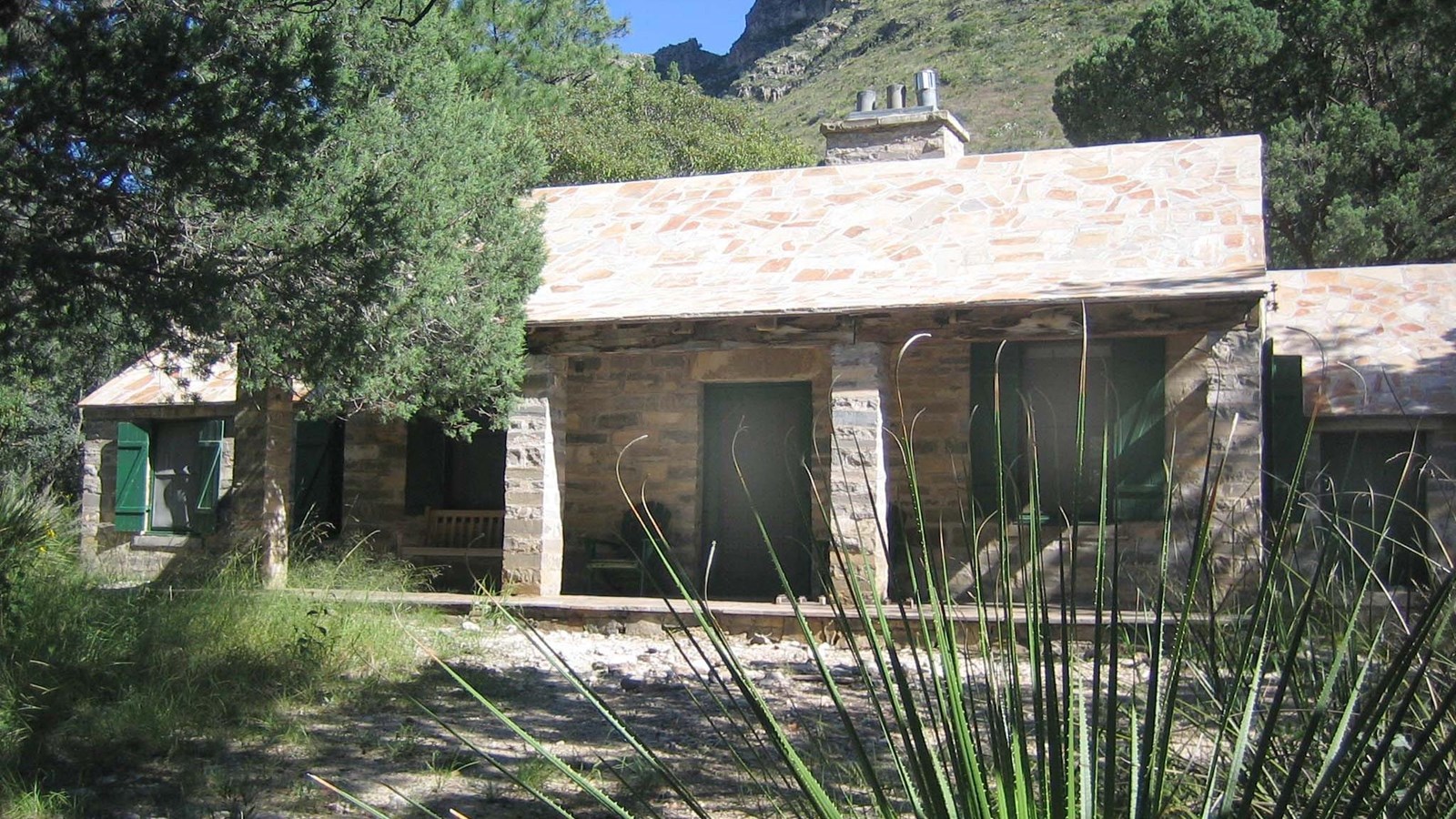Last updated: October 10, 2024
Place
Pratt Cabin

NPS Photo
Benches/Seating, Historical/Interpretive Information/Exhibits, Information - Ranger/Staff Member Present, Picnic Table, Shelter/Cabin
Just over two miles inside McKittrick Canyon, at the confluence of North and South McKittrick Creek is a stone cabin and outbuildings built as a vaction home by the oil geologist Wallace Pratt in the 1930s. Today, the porch and grounds of the cabin make for a pleasant rest stop as visitors hike into McKittrick Canyon.
Geologist Wallace Pratt was introduced to the Guadalupe Mountains by an associate, Judge Drane, while on a business trip to Pecos, Texas in 1921. After Drane mentioned that there was land for sale, Pratt and three colleagues bought ranch property in the area. By 1930, Pratt had purchased the rest of his original partners’ land holdings and continued to expand his ownership, which included the lower portion and mouth of McKittrick Canyon. Pratt grazed approximately 100 head of cattle on his property, which he called Manzanital Ranch. Between 1931 and 1932, the Pratts had a stone cabin built at the confluence of the north and south forks of McKittrick Canyon to serve as their summer home.
Vance Phenix, an engineer and architect from John Staub’s Houston office, drafted the plans for and subsequently oversaw the actual construction of the Cabin. Dean Phenix, Vance’s brother, was an accomplished carpenter and assisted in the construction. Phenix hired Alfred Lehman, a rancher that lived near McKittrick Canyon as a laborer. Greene McCombs, who lived on property adjacent to Pratt’s, helped quarry and transport the stone used to construct the Cabin. The plumbing was installed by a professional from Calsbad, New Mexico. The small crew constructed the Cabin over the winter of 1931-1932. Vance Phenix camped with his wife and two sons at the site of the Cabin during the duration of the construction. The Garage was completed after the Cabin by another crew; the exact date of its construction is unknown.
The limestone blocks were quarried from the former McCombs Ranch site, approximately 4.5 miles from the site of the Cabin. The site of the quarry was chosen as the limestone was weathered smooth and fractured in thin beds that required less work to form ideally shaped blocks and slabs. The stone was transported into the canyon using Greene McCombs’ pick-up truck and a horse-pulled sled. The stonework, the foremost character-defining feature of Pratt Cabin, was laid by stonemason Adolph May. The yellow pine timber was shipped from East Texas to Carlsbad, NM.
Once complete, the Pratts furnished the cabin with rough plank reclining chairs, four beds and assorted hammocks, and a special table to seat twelve. Outdoors was a picnic table made of stone. Although the cabin is often called the "Pratt Lodge," Wallace Pratt told an interviewer that he had grown up in Kansas and never quite learned what a "lodge" was used for. He always referred to the house as The Stone Cabin. During summers when Houston, Texas is hot and humid, the Pratts and their three children spent time in the Guadalupes, sharing the cabin with friends.
The Pratt family used the Cabin chiefly as a summer home from 1932 until 1940, when Wallace's wife, Pearl, died. Wallace soon remarried, and by 1941, they began designing a second residence in the area, Ship on the Desert, which was completed around 1943. McKittrick Canyon was a destination for geologists from all over the world, many of whom were hosted by the Pratts at the Cabin. The contractor commissioned to build Ship on the Desert lived in the Cabin while the new residence was being built. The use of the Cabin declined, though the Pratt family continued to use it as a retreat.
In 1963, Pratt donated over 5,000 acres of land to the National Park Service, including Pratt Cabin and Ship on the Desert, which greatly contributed to the creation of Guadalupe Mountains National Park in 1972. Pratt Cabin was listed on the National Register of Historic Places in 1975.
Pratt Cabin is currently used as an interpretive site, commemorating the Pratt family’s residence in the canyon. The east bedroom within the Cabin is used for storage of National Park Service supplies and Cabin materials that are not in use. The grounds around the Cabin and Garage are used as a picnic and rest area for hikers. The Cabin is not open to the public unless a volunteer or ranger is present, nor are there bathroom facilities at the site.
